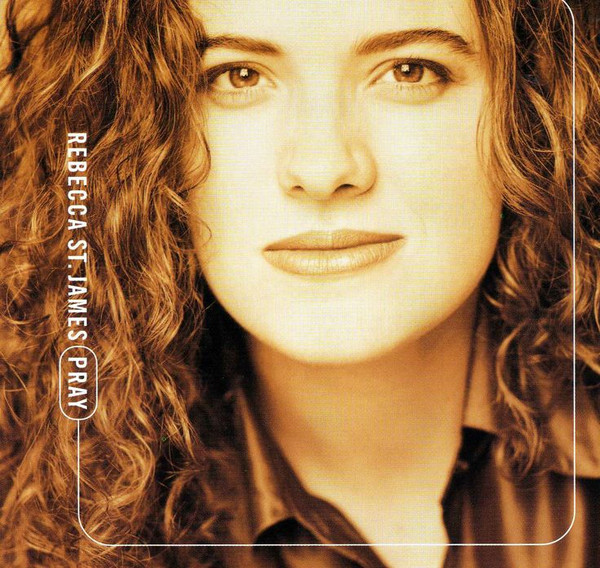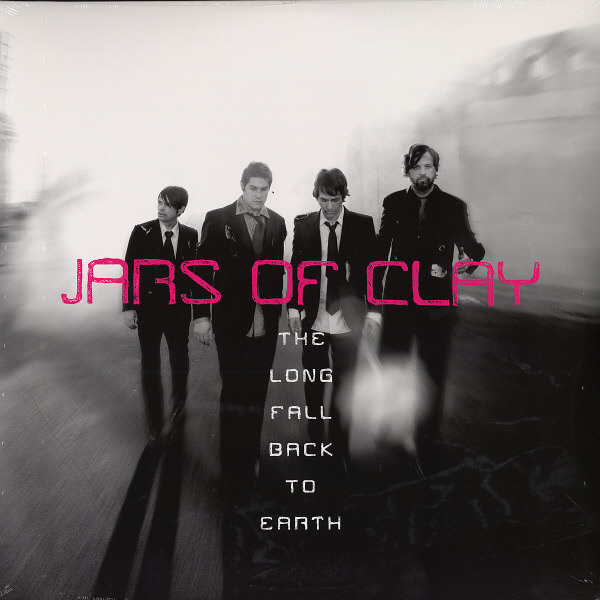Blog
Album Of The Day: The Darkest Night Of The Year by Over The Rhine

Since this album is called The Darkest Night Of The Year, it seems fitting to play this album on a cold, dark winter night near the winter solstice. And it feels right to play it on a quiet night next to the Christmas tree and maybe a fire and a warm drink. This album is a very specific vibe: soft and blues-y, with lilting vocals from Karin Bergquist, beautiful piano and harmonium from Linford Detweiler, and others on bass, drums and more. It's definitely not a holiday album to put on during a party, but more one for a quiet, reflective late night leading up to Christmas or maybe winding down after an event. As well as a few original songs about Christmas, some carols are performed, some with vocals and others without. Karin and Linford, married shortly before this album came out, have been performing together as Over The Rhine for over 35 years. I've been playing this one on a winter solstice night for a number of years now.
Release Year: 1996
Listen on Apple Music
Listen on Spotify
Album Of The Day: The Music Of Christmas by Steven Curtis Chapman

This is another of my favorites I've been enjoying for decades. In the 1990s, Steven Curtis Chapman was one of the biggest names in Christian pop & adult contemporary music. In this first Christmas album from the artist, he hits so many of the old carols with his beautiful vocals, an acoustic guitar, and lush strings and other instrumentation. There's also plenty of original songs, like "The Music of Christmas" and "Christmas Is All In The Heart", which encourage us to listen to what God is saying and to not focus on the presents, the decorations and the parties, but to be with family and friends in this season. I also love the instrumentals; there's a medley of carols in the middle of the album as well as "Carol of the Bells", both of which are a beautiful mix of pop and symphonic music elements. I remember setting up Christmas lights in my dorm 25 Christmases ago to this album, and it doesn't really start the Christmas season for me until I give this excellent album a listen.
Release Year: 1995
Listen on Apple Music
Listen on Spotify
Album Of The Day: Happy Golden Days by The Arcadian Wild

Here's more new Christmas music for 2024! Americana/modern bluegrass band The Arcadian Wild put together 7 songs of beautiful music for the Christmas holiday season. For Advent, it starts with "Come Thou Long Expected Jesus" and later it includes another old hymn text, I think, in "Nations That Long In Darkness Walked". Classic carols like "Good King Wenceslas" and "O Come, All Ye Faithful" are here as well. And it closes out with less religious fare in "Up On The Housetop", an instrumental, and "Have Yourself A Merry Little Christmas". I'm definitely surprised at how much energy this band has in their music despite having no drums at all, and a bunch of these songs are a rollicking bluegrass jam, while some are a bit more subdued.
Release Year: 2024
Listen on Apple Music
Listen on Spotify
Album Of The Day: Happy Christmas Vol. 2 by Various Artists

Back before the era of streaming and endless digital singles and EPs, the "special event" and "compilation" albums were king. Tooth & Nail Records and their BEC Recordings label had the "Happy Christmas" series of albums of their artists and other rock bands in the world of Christian music presenting a fun collection of Christmas tunes, both sacred and secular. You've of course got lots of Tooth & Nail punk and indie rock bands delivering high-octane versions of classic carols and standards. There's also covers of songs popularized by Elvis Presley and Brenda Lee, Sixpence None The Richer's version of "You're A Mean One, Mr. Grinch", and The Lost Dogs do their own hilarious take on Alvin & The Chipmunks's "The Chipmunk Song" which pokes fun at the future of music to close out the album. Some favorites of this release are All Star United's cover of '80s glam rock song "I Wish It Could Be Christmas Everyday" and Plankeye's rock cover of a early 1900s hymn "Gesu Bambino (The Infant Child)". Original, new songs from punk band MxPx, electropop band Joy Electric and folk rock band The Normals are present, and I especially enjoy the last one. Unfortunately, since these special event albums had songs from many different labels and rights holders, this album and others will likely never be available on streaming services exactly as it is. So you might have to find a CD or cassette copy of this album to enjoy it as I have for the last 25 Christmases.
Release Year: 1999
Album Of The Day: Advent Christmas by Future Of Forestry

Future Of Forestry is mostly the artist name of Eric Owyoung, a songwriter, arranger, and performer. On this EP, he sings 5 traditional Christmas songs with his beautiful baritone voice, with lush instrumentation of guitars, strings, sometimes drums and percussion, and even some horns. (Whoa, the credits says there's a theremin in there somewhere?) Some tracks like "The First Noel" are quiet, but "O Come O Come Emmanuel" and "Little Drummer Boy" are much more rock than the others. Future Of Forestry makes these songs their own by inserting instrumentation and interludes in places while still honoring these classic songs. They've got a bunch of other Christmas EPs and albums too, if you like this one.
Release Year: 2008
Listen on Apple Music
Listen on Spotify
Album Of The Day: Advent by Wendell Kimbrough

In many Christian traditions, Christmas does not start until December 25th, while modern American culture considers the Christmas season to start in November and go up to Christmas. The four weeks leading up to Christmas are called "Advent", a seasons of reflection and longing for the coming of Jesus Christ. In looking for some Advent music today, I found this new EP from Wendell Kimbrough, an artist I'm not that familiar with but I think I need to check out his work more. These songs are beautiful, folk-music-style settings of old psalms and hymns as well as more modern worship songs of longing and praise. This EP is a great way to long for the joys and celebrations of Christmas to come.
Release Year: 2024
Listen on Apple Music
Listen on Spotify
Album Of The Day: Pray by Rebecca St. James

Huh, this week many of the albums I picked were pop/rock albums with electronic elements, and it just so happens I continue that today. Young Christian pop star Rebecca St. James and her producer Tedd T. in the late '90s decided to incorporate lots of electronic programming into this album, simply titled Pray. It's definitely not the best Rebecca St. James album, but it came out at a time when she was one of my favorite artists. I didn't really like it as much because it was a bit more mellow than her earlier album God, which had more guitars and rock elements. But listening back to this album today, I like it better than I remembered. Her covers of Rich Mullins and Keith Green songs fit well with the album and have a chill vibe. And actually, there's more guitars than I remember, though they're sometimes buried deep in the mix. Maybe it just plays better on a loud system than it did on some of the systems I had back in the '90s. A special shout-out to the CD hidden track, an electronic dance version of the hymn "Be Thou My Vision", which I've always loved on this album.
Release Year: 1998
Listen on Apple Music
Listen on Spotify
Album Of The Day: The Long Fall Back To Earth by Jars Of Clay

Jars of Clay is one of my favorite bands of all time, and this album is in my top 3 albums of theirs. The band moves away from Americana and does a more electronic pop/rock sound for The Long Fall Back To Earth, their ninth studio album. "Heaven", "Closer" and "Hero" are energetic, upbeat songs. "Two Hands", "Safe To Land", and "Headphones" are a bit more chill and introspective. And "Scenic Route" and "Heart" extend the chill pop to nearly 6 minutes each. It's a beautiful hour of music ruminating on human nature and relationships from a great band and is a great listen as an album. (On streaming, it's a "Deluxe Version" that has many bonus tracks, but the original album is the first 14 tracks.)
Release Year: 2009
Listen on Apple Music
Listen on Spotify
Album Of The Day: Love & War & The Sea In Between by Josh Garrels

This may be one of the best albums of the last 15 years, in my opinion. Josh Garrels is an independent singer-songwriter, and on this album he creates a musical experience that keeps the listener engaged. Brooklyn music collective Mason Jar Music delivers lush, hauntingly beautiful instrumentals and backing vocals throughout, with strings, horns, and other instruments as well as guitars and drums. When I first listened to this, I thought I had it pegged as a mostly acoustic folk/rock album after a few songs. But then when "Farther Along" had spoken-word verses, the next track was just an instrumental interlude, and then "The Resistance" had full-on rap, I realized that this artist was going to keep me on my toes. It's over an hour of top-notch songs that flow seamlessly into each other and it's still my favorite album by Josh Garrels.
Release Year: 2011
Listen on Apple Music
Listen on Spotify
Album Of The Day: Real Emotion by Paper Route

Paper Route is an independent rock/pop band. They've got great drums, great guitars and great synths to go with the soaring pop/rock anthems. This is their third album, and it's an album about a relationship falling apart, though from the energy the band brings to the album, you might not pick up on that in the lyrics on the first listen. (I definitely didn't.) It's an emotional, musical journey nearly an hour long that I found to be a great listen. And I never saw them play these songs on tour, but I do remember seeing them live once before this album and they put on a good show. Although the band has gone on "indefinite hiatus", the members still are working in the Nashville music scene in various roles: songwriting, producing, art/design, etc.
Release Year: 2016
Listen on Apple Music
Listen on Spotify